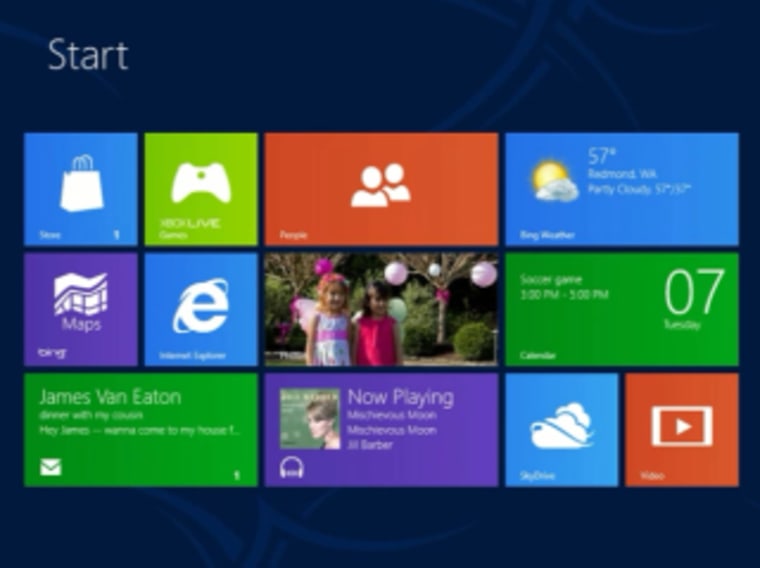
Microsoft's come a long way in the last two years. Thursday is the official launch of Windows 8. How PC users respond to the radically redesigned and architected operating system may greatly affect the future of Microsoft. But Microsoft's made a big mistake: they've stretched the Windows brand so thin that it's going to confuse customers -- and maybe even drive them away.
It's not news to Microsoft how important Windows 8 is to the company, as well as its sister operating system Windows RT that powers the first Microsoft Surface tablet. This is the last chance Microsoft has to get into the race beside Apple and Google for the future of mobile -- and perhaps desktop -- computing. But even though Windows 8 was officially announced only 16 months ago, looking at how the tech community responded to it at the time reminds how audacious -- and in hindsight, how essential -- Microsoft's Windows 8 strategy has become.
Although there was a casual mention of Windows 8 and its ability to run on the ARM-based processors -- the same sort that power iPhones and mobile tablet s-- at the 2011 Consumer Electronics Show, the first official look at Windows 8 came at the D9 conference on June 1st, 2011. All Things D's Ina Fried had an exclusive first look and interview with Windows President Steven Sinofsky, who is quoted right out of the gate saying, “[Windows 8] is ‘no compromise’ and that’s really important to us."
But there was a compromise to come: Windows 8 doesn't actually run on ARM processors; instead, that's what Windows RT is for. The new "Windows Store" apps -- think of them like iPad or Android tablet apps -- run on both Windows 8 and Windows RT devices. But traditional -- some might say "real" -- Windows apps like Photoshop or Minecraft will only run on Windows 8 machines that use an x86 chip. (At least until their developers create dual-Windows versions, something Microsoft obviously hopes will become more common.)
There are also native Windows RT apps that just run on RT, just to make it more confusing.
At the time, it was also presumed that Windows Store apps would be more like simple web widgets. Wrote Fried:
The other type of application, which has to be written in HTML5 and Javascript, looks more like a mobile application, filling the full screen. Internet Explorer 10, which is part of Windows 8, has already been configured to run in this mode, as have several widget-like apps for checking stock prices and weather.
Those widgets ended up being quite a bit more like traditional Windows applications, developed in a variety of languages. ) And Windows Store apps for Windows 8 can run on Windows RT as well...sometimes. (To speak nerdy, developers can choose to compile for ARM, but it's not required.)
What becomes apparent when looking through the coverage of Windows 8 from a year-and-a-half, though, is that at the time Microsoft thought it would be able to make a single version of its operating system that would work for desktops, laptops, and tablets alike. (Funnily enough, at the time, Microsoft was calling "Windows 8" a working title; it wouldn't officially name the product until 2012.)
What's clear is this: Windows 8 started as something easy to understand, a unified operating system that would run on all types of hardware. Along the way, Microsoft realized they'd bitten off more than they could chew, split off Windows RT from Windows 8, and sowed a lot of confusion that's going to get worse before it gets better.
What's disappointing in all of this is that Windows 8 -- the full-blown version -- has been getting mostly high praise from those who have used its many preview builds. Tim Anderson, writing for the Guardian, called a summer build proof that Microsoft could have "turned on a pin and transformed its client and consumer operating system from one that is hopelessly bogged down in legacy and unsuited for modern mobile computing, to one that is beautifully engineered for the next generation of cloud-connected devices."
(Broadly, anyone using Windows 8 on a touchscreen device loves it, while those using a keyboard and mouse tend to be of mixed minds.)
But for the first time since Windows NT (which wasn't a consumer-facing version of Windows), Microsoft has been sloppy with its most precious brand. And that's just at the highest level; inside the operating system and on the web, Microsoft has a supercilious tendency to slap the "Windows" name on everything from DropBox clones ("Windows Live Mesh") to file browsers ("Windows Explorer," not to be confused with "Internet Explorer," Windows' default web browser).
It's a mess. It's confusing. And it's ultimately going to be a big factor in confusion and dissatisfaction for a lot of customers over the coming months. (Especially when you consider there will be another Microsoft Surface tablet coming soon that does run the full-blown Windows 8.)
Yet a quick look at recent history makes one thing clear: Microsoft is making it up as they go along. And that might not be good enough anymore.